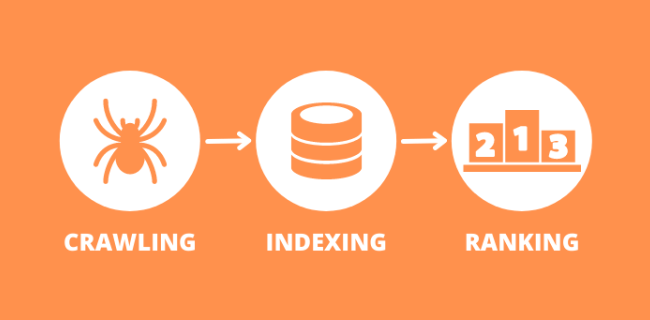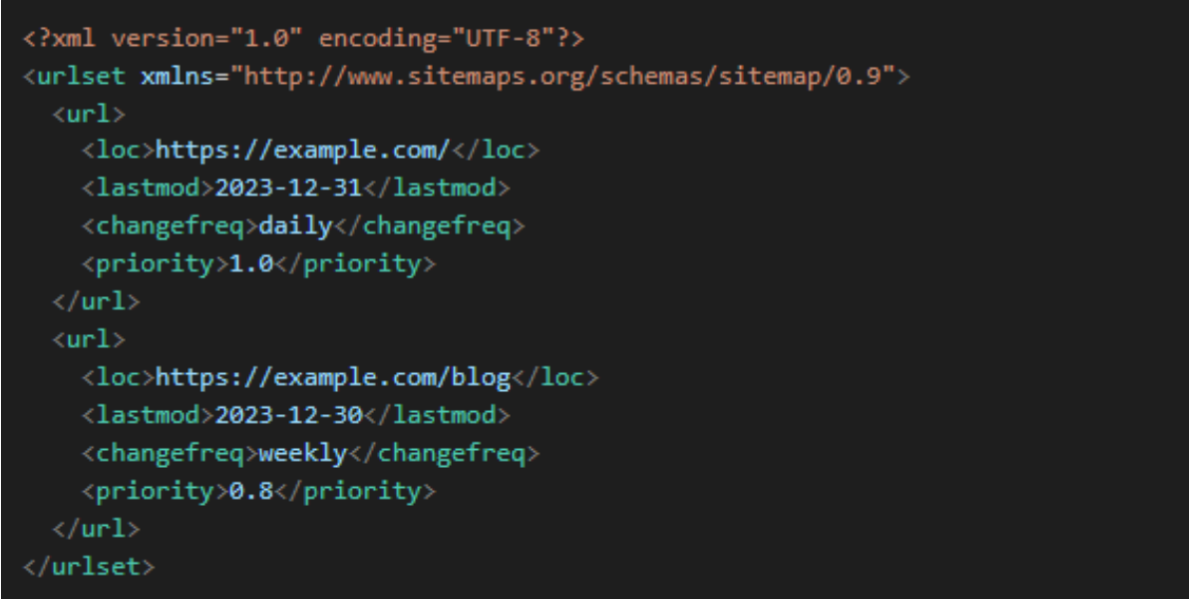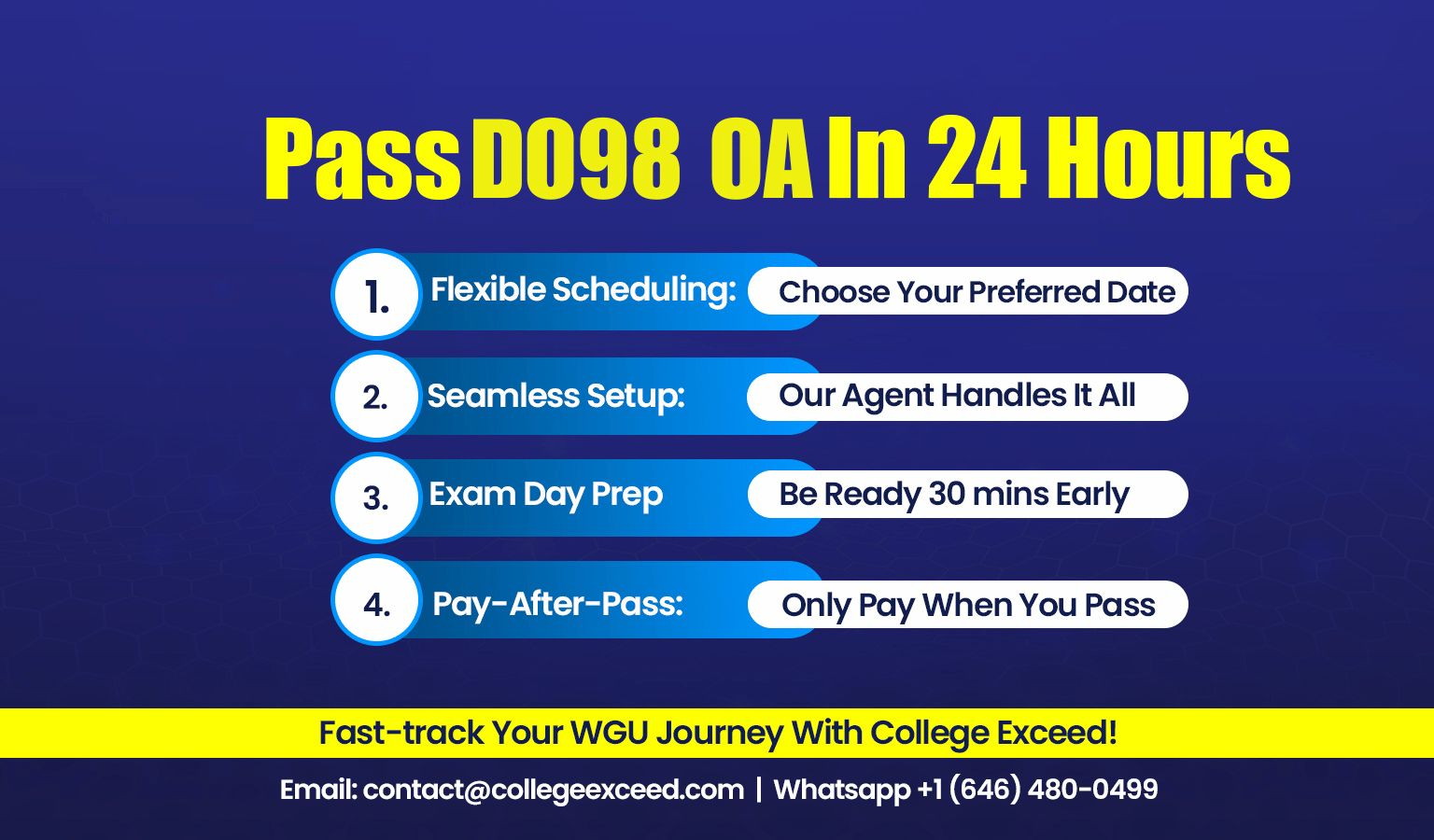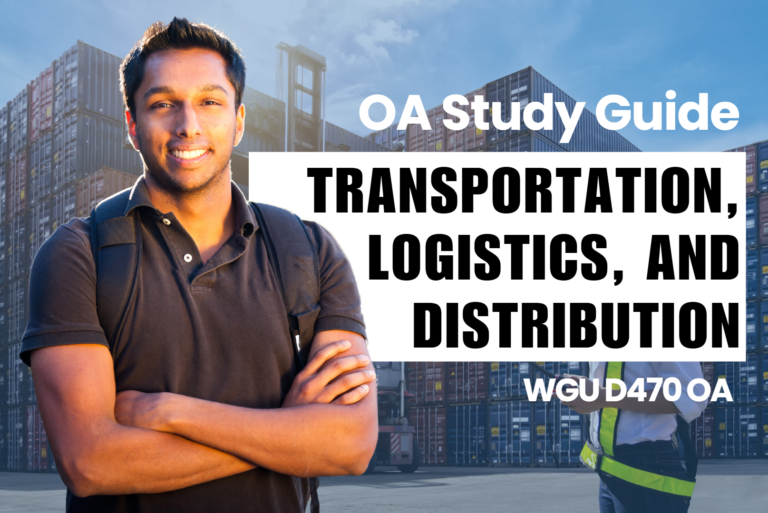WGU D098 OA Study Guide II - 2025 | Mastering Digital Marketing with Search Engines 📖
Imagine this: You just started a pizzeria, and nothing is going right because people don’t even know you opened it. Frustrating, right? This is exactly what happens to any website that fails to optimize its pages for a search engine. The WWW is huge, it is a worldwide electronic network as large as one huge metropolis; Your website may be only one among so many shops. This article explores key concepts in search engine functionality and digital marketing strategies that improve online visibility:
- Search Engine Marketing (SEM) and Search Engine Optimization (SEO): SEM uses paid advertising to increase website visibility, while SEO focuses on optimizing content, keywords, and backlinks to rank higher in organic search results.
- Essential Functions of a Search Engine (Crawling, Indexing, and Ranking): Search engines crawl the web to discover content, index pages for storage, and rank them based on relevance and quality for user searches.
- Sitemaps and XML Sitemaps: Sitemaps help search engines understand a website’s structure, and XML sitemaps specifically provide a roadmap for better crawling and indexing of web pages.
By following this guide, you’ll discover how SEM and SEO bring more of your content to the forefront of search engines, the roles of crawling, indexing, and ranking in the background, and how sitemaps keep everything on track. Whether you’re tackling your WGU D098 OA questions or just getting your feet wet in digital marketing this is your ticket to becoming a maestro of the search engines and having your website poppin.
How to Use This Guide for the WGU D098 OA Exam?📖
The D098 Digital Marketing OA exam at WGU evaluates your understanding of search engine marketing, search engine optimization, and website structure. This guide simplifies the key concepts of Search Engine Marketing (SEM) and Search Engine Optimization (SEO), the essential functions of a search engine (crawling, indexing, and ranking), and sitemaps and XML sitemaps to help you grasp the topics tested in the exam.
We also provide exam-style questions and practical applications to ensure you’re fully prepared for the questions on the WGU D098 OA exam.

Understanding the Essential Functions of a Search Engine: Crawling, Indexing, and Ranking For D098 OA📝
Search engines are programs that assist in retrieving information from the World Wide Web. When you type your question, then the engine pulls down in a few seconds the links to the Websites relevant to your question. But most of the time, one questions the functionality and performance of the search engines, no one usually cares about how they operate in the background. This understanding is essential for mastering concepts in digital marketing, such as those covered in WGU D098 OA.

Essential Functions of a Search Engine
Function | What is it? | How Does it Work? | Why is it Important? |
Crawling | Crawling is the process where search engines send out special robots, called “crawlers” or “spiders,” to roam around the internet and find new or updated web pages. | These robots start by visiting a few known websites and following links on those sites to discover new pages, similar to exploring a treasure map. | Without crawling, search engines wouldn’t know which websites exist or what content is available on them. |
Indexing | Indexing is the complicated process by which keywords, titles, and descriptions gathered in the crawling process are sorted and stored in a vast database known as the ‘index’ | The search engine stores the main features of the web page such as the content, keywords, and topics to help it present the information when a seeker looks for similar information. | The principle here is that as much as the content of a web page may be very good if the page is not indexed, it will not be seen in the search results. |
Ranking | Ranking is the process of determining which web pages are the most relevant and useful for your search query. | Search engines use algorithms to rank pages based on relevance, credibility, backlinks, speed, and mobile-friendliness. | Ranking ensures that you see the most helpful and trustworthy information first. |
Real-Life Examples
- Crawling: Now, picture this, your teacher gives you a task to gather all the science books in your school library. It is done from one shelf to another; one row to another and so on. This is similar to how a crawler explores a website’s link by link if a link is encountered it will be followed or if a sitemap is encountered it will be read and its links followed.
- Indexing: Imagine you’re being required to classify your books by subject – science, math, history. Much later when you require a science book you know where it lies and you don’t have to umm for minutes. That is what indexing does for web pages.
- Ranking: Suppose you’re searching for the recipe for a chocolate cake. Your friend shares with you three recipes and from all three you choose the one that is the most simple, the one whose preparation is described as being very delicious is given great reviews, and is prepared by your favorite chef.
Why These Functions Matter
Understanding crawling, indexing, and ranking is essential for optimizing websites. These processes ensure that:
- Search engines discover your content.
- Your pages are stored correctly for easy retrieval.
- Your website ranks higher, attracting more visitors.
Practical Applications
- SEO Strategies: By optimizing for crawling (e.g., submitting sitemaps), indexing (e.g., using relevant metadata), and ranking (e.g., improving page speed), websites can enhance their visibility.
- SERP Features: Familiarity with features like featured snippets and local packs helps businesses adapt their strategies for better rankings.
Importance For D098 OA
Search engines are much like the Librarian of the World Wide Web, ceaselessly working to provide you with the best information. The crawling process enables them to search for web pages while the indexing process enables them to sort out the pages they find; ranking makes sure you get the best. With such functions understood students are in a good position to realize how search engines make our lives easier each day. For students who still anticipate WGU D098 OA questions, the knowledge of the above concepts will help them perform excellently in digital marketing.
Search engines are to the internet what librarians are to a library – or are they? So how then does a search engine determine what to present first? Let’s explore!
Search Engine Marketing (SEM) and Search Engine Optimization (SEO): A Beginner’s Guide For D098 OA📝
Imagine you have a shop that sells the best cupcakes in town. How would you let people know about it? In the digital world, Search Engine Marketing (SEM) and Search Engine Optimization (SEO) are the tools that help businesses tell the world about their “shops.” These strategies are essential for mastering digital marketing concepts like those covered in WGU D098. Let’s break these concepts down step by step so you can understand how they work and why they’re important.
What is SEM?
SEM stands for Search Engine Marketing, which is like putting up an advertisement for your shop right at the town square where everyone can see it. In the online world, SEM uses search engines like Google to promote websites. It includes both paid advertisements and organic techniques (like SEO) to increase visibility on search engine results pages (SERPs).
Key Components of SEM
- Pay-Per-Click Advertising (PPC):
- Ever thought of paying to advertise your shop and have this commercial seen everywhere people walk past? In SEM, the company erects advertisements for searches that are paid for, every time someone enters certain keywords. For instance, if your business is selling cupcakes, you’d be willing to bid for your site to appear when someone does a search for the best cupcakes near me.
- Ever thought of paying to advertise your shop and have this commercial seen everywhere people walk past? In SEM, the company erects advertisements for searches that are paid for, every time someone enters certain keywords. For instance, if your business is selling cupcakes, you’d be willing to bid for your site to appear when someone does a search for the best cupcakes near me.
- Keywords:
- Keywords are the words people type into search engines. Choosing the right keywords is like picking the best spot to advertise your shop.
- Keywords are the words people type into search engines. Choosing the right keywords is like picking the best spot to advertise your shop.
- Ad Formats:
- Ads can appear as text, images, or even videos. For instance, your cupcake ad could show up as a picture of your most popular cupcake with a catchy description.
- Ads can appear as text, images, or even videos. For instance, your cupcake ad could show up as a picture of your most popular cupcake with a catchy description.
- Metrics:
- Success in SEM is measured using metrics like:
- Click-Through Rate (CTR): How many people clicked your ad.
- Conversion Rate: How many of those clicks led to actual sales.
- Cost-Per-Click (CPC): How much you pay for each click on your ad.
- Success in SEM is measured using metrics like:
What is SEO?
It means Search Engine Optimization which is somewhat like making your shop stand out and strategically placed so that people don’t need to look for it via paid advertisements. It means that you make your website as ideal as possible therefore it gets a higher ranking in the search engine naturally.
Key Techniques in SEO
- On-Page Optimization:
- This is like painting a new color on the interior of your shop. This entails putting the right keyword specification in the body of the web page, title bar, and description to make the web page appealing to the search engines.
- This is like painting a new color on the interior of your shop. This entails putting the right keyword specification in the body of the web page, title bar, and description to make the web page appealing to the search engines.
- Off-Page Optimization:
- You should consider this as a recommendation of friends to your shop. This is done by getting other well-reputed sites to link their visitors to our site, something that convinces search engines that it is a reputable site.
- You should consider this as a recommendation of friends to your shop. This is done by getting other well-reputed sites to link their visitors to our site, something that convinces search engines that it is a reputable site.
- Technical SEO:
- This ensures your website runs smoothly, like having clear signboards and easy access to your shop. It involves:
- Fast loading speeds.
- Mobile-friendliness.
- Proper indexing so search engines can “read” your website.
- This ensures your website runs smoothly, like having clear signboards and easy access to your shop. It involves:
SEM vs. SEO
Aspect | SEM | SEO |
Cost | Involves paying for ads (e.g., PPC). | Focuses on organic traffic, no direct cost. |
Time | Immediate results with paid ads. | Long-term strategy that takes time to build. |
Results | Provides instant visibility. | Gradually improves rankings and sustains. |
Longevity | Short-term effect; stops when ads stop. | Long-lasting effect with proper optimization. |
Traffic Source | Paid traffic from ads. | Organic traffic from search engines. |
Why Are SEM and SEO Important?
Imagine someone types “cupcakes near me” into Google. If your shop appears on the first page, there’s a higher chance they’ll visit. Studies show that most people don’t look beyond the first page of search results, so SEM and SEO help businesses grab that coveted spot.
Real-World Examples
- SEM Example: A new cupcake shop runs a PPC campaign using keywords like “chocolate cupcakes” and attracts hundreds of customers within a week.
- SEO Example: An established bakery optimizes its website with quality content, like recipes and blog posts, gradually becoming the top search result for “best cupcakes in town.”
Tools for SEM and SEO
- For SEM: Google Ads is a popular platform for creating and managing PPC campaigns.
- For SEO: Tools like SEMrush and Ahrefs help analyze keywords and track website performance.
Challenges and How to Overcome Them
- Keyword Selection: The most problems may arise when choosing the right keywords. Some of the key things that you need to do include using a Keyword Planning tool such as Google to determine some of the keywords that reflect the needs of the target clients.
- Cost Management: Managing expenses in SEM requires careful planning. Set clear budgets for your campaigns and regularly monitor ad performance to ensure you’re getting a good return on investment (ROI).
- Algorithm Changes: SEO is influenced by search engine algorithm updates. Stay informed by following industry blogs, attending webinars, or subscribing to newsletters from platforms like Google Search Central.
Importance For D098 OA
SEM and SEO are like two sides of the same coin, each offering unique benefits. These strategies are essential for mastering topics like those in WGU D098, helping students build effective digital marketing campaigns. Together, they form a powerful strategy to attract visitors and grow businesses. Whether you choose to pay for ads or optimize organically, both approaches ensure that your shop—or website—gets noticed.
But once you know how search engines work, how do you help them find your site easily? Let’s explore sitemaps next!
Tired of reading blog articles?
Let’s Watch Our Free WGU D098 Practice Questions Video Below!

Sitemaps For D098 OA: Making Your Website Search Engine Friendly📖
Suppose, the website with which you are working is a library with tens of thousands of books (web pages). Can you defend the librarian (the search engine and guide the librarian to search within the shelves and get the perfect books for a class without getting lost in the midst of the process)? And this is where HTML sitemaps and XML sitemaps are handy. It is now time we start exploring this subtopic from one step to another to explain why every website needs them.
What is a Sitemap?
Sitemap is a model that shows where and what can be found on the website for easier crawlers’ navigation. It is that guide to your website telling the search engines about the specific areas and links to show to users.
There are two main types of sitemaps:
- HTML Sitemaps:
- Designed for users.
- Provide a user-friendly list of pages on your website.
- Help visitors easily navigate the site, especially if it has many pages.
- XML Sitemaps:
- Created for search engines.
- Contain technical information about your website’s structure and pages.
- Help search engines understand your site’s hierarchy and index its content more efficiently.
Why Are Sitemaps Important?
Sitemaps help in enhancing your website’s ranking among the search engine indices. It improves crawling by allowing search engine robots to find pages that could otherwise go unnoticed, improves the speed at which pages are indexed particularly newly created or frequently edited pages, provides necessary structure like the last update date and page relevance, and is indispensable for a website with large numbers of pages or thousands of pages where content is easier to find and rank.
What is an XML Sitemap?
An XML sitemap is a specific type of sitemap written in XML (Extensible Markup Language). It provides detailed information about your site’s URLs and their relationships, making it easier for search engines to crawl and index your content.
Key Elements of an XML Sitemap:
- URLs: A list of all the pages on your site.
- Last Modified Date: Indicates the last time a page was updated.
- Change Frequency: Suggests how often a page is updated (e.g., daily, weekly, monthly).
- Priority: Specifies the importance of a page relative to others on the site.
How to Create a XML Sitemap
Creating a sitemap can be done manually or by using automated tools. Here’s a detailed guide with examples:
- Manually:
- Open a text editor like Notepad (Windows) or TextEdit (Mac).
- Write your XML sitemap using the correct syntax. For example:

- Save the file as sitemap.xml and upload it to your website’s root directory using an FTP client.
2. Using Tools:
- Online Generators: Use tools like XML-sitemaps.com. Enter your website URL, configure settings like change frequency and priority, and download the generated sitemap. For example, if you own an online bakery, you’d enter https://mybakery.com, and the tool would generate a sitemap listing pages such as https://mybakery.com/cakes and https://mybakery.com/contact.
- CMS Plugins: Platforms like WordPress offer plugins like Yoast SEO or Rank Math. Install the plugin, navigate to the sitemap settings, and enable automatic sitemap generation. For instance, a WordPress blog would have a sitemap URL like https://yourblog.com/sitemap_index.xml created automatically.
- Online Generators: Use tools like XML-sitemaps.com. Enter your website URL, configure settings like change frequency and priority, and download the generated sitemap. For example, if you own an online bakery, you’d enter https://mybakery.com, and the tool would generate a sitemap listing pages such as https://mybakery.com/cakes and https://mybakery.com/contact.
Submitting Sitemaps to Search Engines
To ensure your sitemap is effectively utilized:
- Google Search Console:
- Login and go to the “Sitemaps” section.
- Enter your sitemap’s URL and submit.
- Bing Webmaster Tools:
- Use Bing’s tools to submit and monitor your sitemap.
Real-World Example
Consider an online bookstore with thousands of categories and books. Without a sitemap, search engines might miss certain categories or new arrivals. By submitting an XML sitemap, the bookstore ensures all its pages, including the latest books, are indexed quickly, improving their visibility.
Challenges and How to Overcome Them
- Dynamic Content: Websites with frequently changing content may need regularly updated sitemaps.
- Solution: Automate updates using CMS plugins.
- Solution: Automate updates using CMS plugins.
- Duplicate Content: Pages with duplicate content might confuse search engines.
- Solution: Use canonical tags and ensure your sitemap only lists unique URLs.
- Solution: Use canonical tags and ensure your sitemap only lists unique URLs.
- Broken Links: Links in sitemaps that lead to non-existent pages can harm your site’s reputation.
- Solution: Regularly audit your sitemap for errors.
- Solution: Regularly audit your sitemap for errors.
Importance For D098 OA
Sitemaps and particularly, the XML sitemaps are important elements for enhancing the site’s accessibility and for reaching the goals of the search engine spiders to crawl your content properly. For a small blog owner or even the owner of a large e-commerce site, it is behavior to know that a proper sitemap is the secret to search engine optimization. Reflecting on various concepts of digital marketing in WGU D098, obtaining knowledge on sitemaps will help you increase any web resource’s prominence in a search.
Ready to take the next step in understanding how search engines and websites work together? Let’s explore deeper into how to leverage metadata and technical SEO for ultimate optimization!

Wrapping Up Your Digital Marketing Journey with WGU D098 OA📖
Well done on finishing this guide! A sitemap is especially important because it is already time to discuss SEM, SEO, the roles of search engines, including crawling and indexing, and the relevance of ranking. These concepts are essential when it comes to improvement of visibility to improve on the internet results.
As you prepare for the final WGU D098 OA, remember these topics are practical tools you’ll use in your digital marketing career. Grasp these strategies, and you’ll excel in both your assessment and real-world applications.
Good luck, and may your journey in digital marketing be both successful and rewarding!






